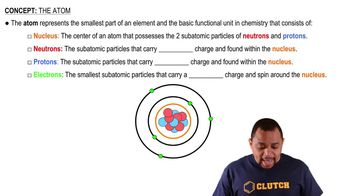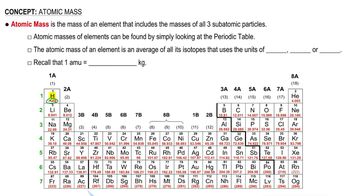Textbook Question
How many protons, neutrons, and electrons are in the following atoms? (d) 80Br
2
views
 Verified step by step guidance
Verified step by step guidance



How many protons, neutrons, and electrons are in the following atoms? (d) 80Br
How many protons, neutrons, and electrons are in the following atoms? (e) 184W (f) 181Ta.
Fill in the gaps in the following table, assuming each column represents a neutral atom.
Symbol 79Br
Protons 25 82
Neutrons 30 64
Electrons 48 86
Mass no. 222 207
Complete the third row of the table.
Fill in the gaps in the following table, assuming each column represents a neutral atom.
Symbol 79Br
Protons 25 82
Neutrons 30 64
Electrons 48 86
Mass no. 222 207
Complete the fourth row of the table.
Fill in the gaps in the following table, assuming each column represents a neutral atom.
Symbol 79Br
Protons 25 82
Neutrons 30 64
Electrons 48 86
Mass no. 222 207
Complete the fifth row of the table.